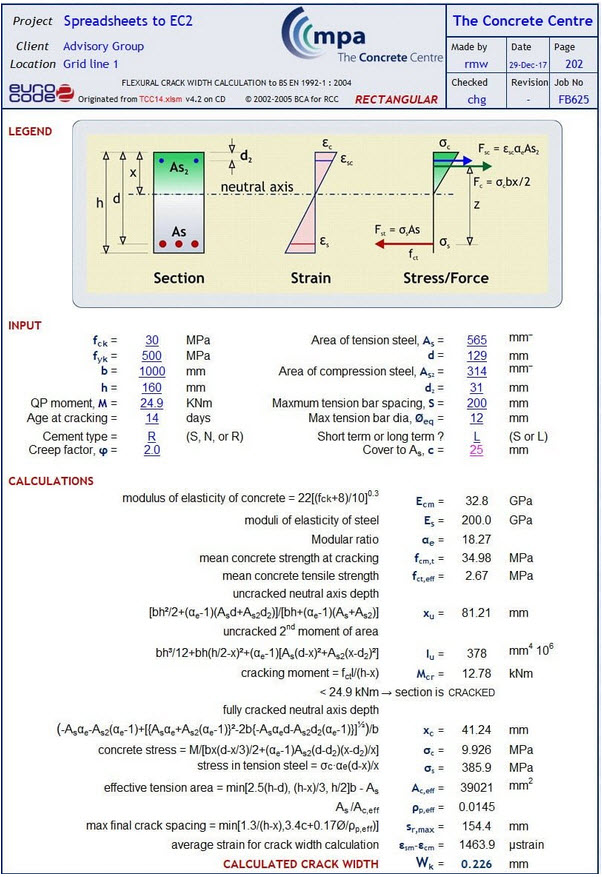Crack Width Calculation Spreadsheet
The crack width of a flexural member is calculated to satisfy a limit state of serviceability
Among prestressed concrete members, there is cracking under service loads only for
Type 3 members. Hence the calculation of crack width is relevant only for Type 3
members. The crack width is calculated for the cracks due to bending which occur at
the bottom or top surfaces of a flexural member
The flexural cracks start from the tension face and propagate perpendicular to the axis
of the member. This type of cracks is illustrated in Section 5.1, Analysis for Shear. lf
these cracks are wide, it leads to corrosion of the reinforcing bars and prestressed
tendons. Also, the cracks tend to widen under sustained load or cyclic load. To limit
the crack width, Type 3 members have regular reinforcing bars in the tension zone
close to the surface, in addition to the prestressed tendons.

The crack width of a flexural member is calculated to satisfy a limit state of serviceability
Among prestressed concrete members, there is cracking under service loads only for
Type 3 members. Hence the calculation of crack width is relevant only for Type 3
members. The crack width is calculated for the cracks due to bending which occur at
the bottom or top surfaces of a flexural member
The flexural cracks start from the tension face and propagate perpendicular to the axis
of the member. This type of cracks is illustrated in Section 5.1, Analysis for Shear. lf
these cracks are wide, it leads to corrosion of the reinforcing bars and prestressed
tendons. Also, the cracks tend to widen under sustained load or cyclic load. To limit
the crack width, Type 3 members have regular reinforcing bars in the tension zone
close to the surface, in addition to the prestressed tendons.
